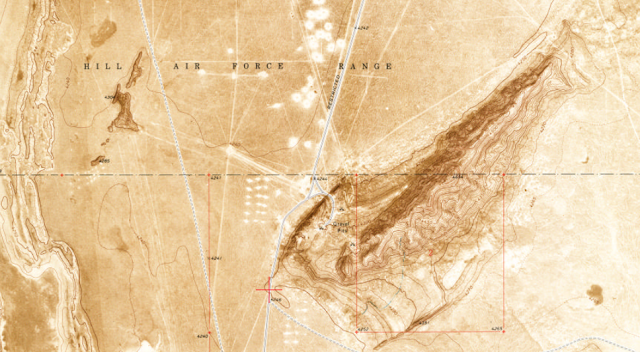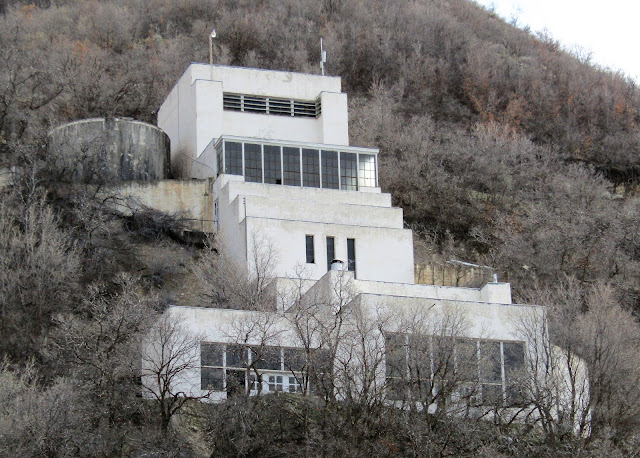Arsenal Villa - A Government Neighborhood in Roy
by Peter
A reader on Facebook asked me to look into the history of the Arsenal Villa neighborhood of Roy. Her husband lived there between 1945 and 1952. I love looking into neighborhood histories, and Arsenal Villa has a pretty interesting one.
The neighborhood of Arsenal Villa lies between Highway 97 (5600 South) on the north and 6000 South on the south. It is bounded on the west by the Frontrunner rail line and on the east by Highway 126 (1900 West). Prior to the 1940s, the area was primarily orchards and fields with a scattering of houses along the boundary roads. At this time, Roy had about 800 residents and the business district consisted of a gas station, a café, two grocery stores, and a lumber yard.
The story of the neighborhood begins with the attack on Pearl Harbor in December 1941. The devastation of the Pacific Fleet led to a good deal of fear on the West Coast. An attack on military facilities in California or Washington was imminently expected and the military decided to relocate some critical functions of those facilities further inland where they would not be subject to a seaborne attack. A number of these facilities ended up in Utah and, at the urging of the Ogden Chamber of Commerce, many were located in and around Ogden. These included Hill Field, the Ogden Arsenal (located on the current western area of Hill Air Force Base, very close to Arsenal Villa), and the Clearfield Naval Depot (much of this property is now the Freeport Center industrial park). These facilities produced, stored, and disbursed munitions and other war materiel to bases on the West Coast.
These new and expanded facilities brought thousands of service members and civilian workers to the area. Many more families were seeking housing than the local market could accommodate and the federal government quickly stepped in to subsidize private construction and to directly construct housing for its workers. These neighborhoods included a trailer park on the current location of Layton Hills Mall, the nucleus of Washington Heights, Navy Acres, Bonneville Estates, and several others. Arsenal Villa consisted of around 600 rental units on 64 acres. The buildings consisted of low, long concrete-block buildings with concrete floors, rectangular in plan with little decoration beyond the windows and a chimney in each unit. Like other defense housing in the area, Arsenal Villa may have been built as four-plexes with sod laid between buildings.
Contemporary reports indicate that there were 420 one bedroom units and 180 studio apartments. One bedroom units rented for $31 per month unfurnished or $35 furnished, while those living in the studio apartments saved $1.50 per month unfurnished or $2 furnished. Furnishings in one bedroom units consisted of "two single beds, chest of drawers, mirror, Hollywood bed, occasional chairs, table and chairs, cooking and heating stoves, and an ice refrigerator" (Ogden Standard Examiner, 30 March 1944, Page 16). Residents began moving in to the apartments in March 1944. By 1945, there were 2,000 residents living in Arsenal Villa.
The new residents brought their families with them and schooling quickly became a concern. The Works Progress Administration had provided a grant to construct an elementary school in Arsenal Villa in 1943, and the school opened as residents moved in. By 1947, there were over 200 school-aged children in the neighborhood and more than twice as many under the age of six. For a time, the neighborhood seems to have been treated as its own community, separate from Roy. It fielded its own sports teams in local leagues along with other government housing areas. Along with the school, the neighborhood also included a community building that contained a large kitchen and an auditorium. It is unclear whether the building also provided community services available at other government housing areas, such as a barber, medical care, and other facilities.
There were some tensions between residents of Roy and Arsenal Villa, possibly caused by the differences between homeowners in Roy and renters in Arsenal Villa. In 1954, amid reports that the Weber County School Board would send some children from Roy to the Arsenal Villa Elementary School, mothers in Roy revolted, claiming that the AV Elementary School did not meet their standards. However, the residents of Arsenal Villa clearly took pride in their community, including raising money for and constructing a park and playground on 15 acres next to the school in 1954.
Roy City purchased the entire housing development from the US Government in 1954 for $48,000, including the rental units, community building, and park. The plans appear to have included demolition of the concrete-block housing from the beginning. The demolition began shortly after purchase and was gradually completed over the next two years as renters were given notice to move out. The final buildings were taken down in 1957 and the land was sold to a developer as a 131 lot subdivision of single-family homes, now known as Municipal Acres. The school was renovated and renamed Municipal School and the park was renamed Municipal Park. The community building was adapted into use as Roy City Offices, although these were later moved out of the neighborhood.
Although most of the buildings that made up Arsenal Villa are long demolished, the neighborhood holds the history of the families that lived there, their contributions to the war effort, and the major changes they brought to the sleepy towns of Davis and Weber Counties.


This is the most completely whitewashed description of Arsenal Village history imaginable! Not a single reference to segregation and racism. Astonishing, but not surprising.
ReplyDeleteHi LB, I'd love to see sources with the information you're referring to. There was certainly segregation in the military at the time the neighborhood was first built, but I found no references to segregation in Arsenal Villa in the sources available to me. There were also certainly racist housing covenants in many developments in Utah and elsewhere at this time, but I do not have access to any such covenants directly related to Arsenal Villa. If you could provide me with links to and/or copies of such sources, I would be happy to update the article.
Delete